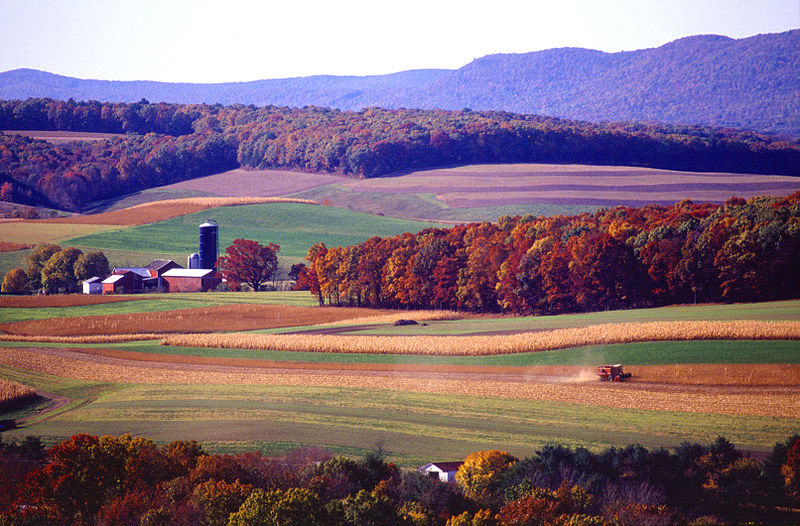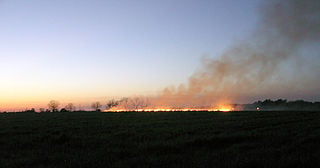The below article used with the permission of the Great American Publishing Company*
Recurring forest fires along the West Coast have left growers casting a wary eye towards the skies. What effects might drifting smoke have on crops – and is there anything that can be done to mitigate the potential damage to fruit?
Since 2016, researchers at Washington State University (WSU) have been studying the effects of drifting smoke on winegrapes. Now, that research is beginning to bear some helpful data for growers.
“We’re trying to understand the impact (of smoke) on wine quality,” said Tom Collins, assistant professor of viticulture and enology at WSU, addressing a December gathering at the 114th annual meeting of the Washington State Tree Fruit Association in Yakima, Washington. “We first came to recognize it as an issue in the late 1990s, early 2000s,” he said, citing research from Australia. Those early studies identified a number of compounds such as guaiacol, 4-methyl guaiacol, syringol and furfural in grapes, causing the potential for wine with “smoky, ashy aromas and cigar-butt aroma in the aftertaste,” Collins said. “This is not the aroma of a campfire. It tends to be less pleasant.”
In WSU’s Rosa Vineyard, a 600-acre site near Prosser, Washington, research trials continue. For these studies, a “backyard smoker” is used in a 200-foot-long hoop house containing up to 60 vines of cabernet and riesling grapes. An identical, control hoop house is set nearby. Researchers can mimic real-world exposures to smoke – in both duration and intensity of exposure. For example, they have simulated smoke from recent forest fires in the Cascade Mountains, some 70 to 80 miles away, that lingered for days, reaching a concentration of 0.9 mg per cubic meter. They also have simulated conditions from smoke that swept into Washington, Oregon and Idaho from forest fires in British Columbia, reaching a 2.0 mg per-cubic-meter concentration for about 24 hours.
“We can replicate what happens in actual smoke exposure,” Collins said. At the end of the day, they have enough fruit to make wine for mitigation studies.
The research is focusing on two key questions: How much smoke does it take before you see a problem in the fruit and in the wine? And, if grapes have had a significant exposure, how could you treat the grapes and/or wine to improve quality?
As to the amount of smoke it takes to affect fruit quality, “it depends,” Collins said. It depends upon the fuel source, whether there is flame or smoldering fire, the proximity of the fire and timing of the fire related to the development of the fruit.
“We’ve spent a fair amount of time burning things!” he said.
Studies have shown that burning sagebrush, for example, results in a more intense smoke aroma and flavor in the wine than burning wood such as Douglas fir. Researchers have burned more than a dozen kinds of plants commonly found in western rangelands, analyzing compounds in the smoke through use of paper filters on monitoring devices.
“All smoke yields some guaiacol,” Collins said. As the fruit ripens, both the leaves and the grapes make glycosides – or molecules in which sugar is bound to another substance, which, in this case, could be components of smoke.
Researchers have performed tests on both grape skins and leaves from the vines at four weeks pre-veraison (before the onset of ripening), at veraison, three weeks post-veraison and six weeks post-veraison, all showing some “smoky aromas and flavors.” Australian studies indicated that winegrapes seem to be the most vulnerable to smoke seven days after the fruit begins to ripen, he noted. However, WSU studies have shown effects as early as four weeks pre-veraison.
To reduce the effects of the smoke, the researchers have used reverse osmosis.
“If you treat the wine sufficiently, you can reduce the characteristics (of smoky aromas and taste),” Collins said.
Red wines seem to be more of a challenge than whites when it comes to smoke exposure because the processing streams are different. Production of red wine uses the skins while, in production of white wines, the juice is pressed away from the skins. For production of reds, early research indicates that less fermentation time, for example, may help to lessen the impact of harmful elements in the skins.
Tasting, in itself, can release a smoky essence. As a person sips wine, enzymes in the saliva can “cleave” glysosides [sic] remaining from smoke exposure, Collins said.
“As you taste the wine, enzymes work on these glysosides [sic]. You may not smell it, but you taste it as an aftertaste.” There’s also a concern with wine sitting over time.
“You can bottle a wine that seems fine and then the glycosides can come back,” Collins said. “Month after month, the levels of guaiacol are increasing.”
Since some glycosides seem to be more stable than others, the WSU researchers are “working on chemical composition, so we can target the wines that are more of a problem,” he said. They’re looking at different reverse osmosis membranes “that might allow us to reduce or remove the glycoside forms of the smoke-related compounds.”
The goal is to achieve a product that is “not just free of smoke flavors now, but free of a precursor for problems later on,” he said.
The WSU team has not yet had the opportunity to look at whether smoke exposure is an issue for other fruit, Collins said.
“We’re in the midst of grant proposal season, right now,” he explained. “Our plan is to continue to look at grapes, timing and smoke intensity, to try to understand better how much smoke intensity is needed to create the problem.”
*Christine Corbett Conklin, FGN Correspondent, “Blowing In The Wind: Effects of smoke on crops focus of Washington State University research,” Fruit Growers News, Jan. 2019, pp. 24, 25

Image (lower): Agricultural Research Service, United States Department of Agriculture
